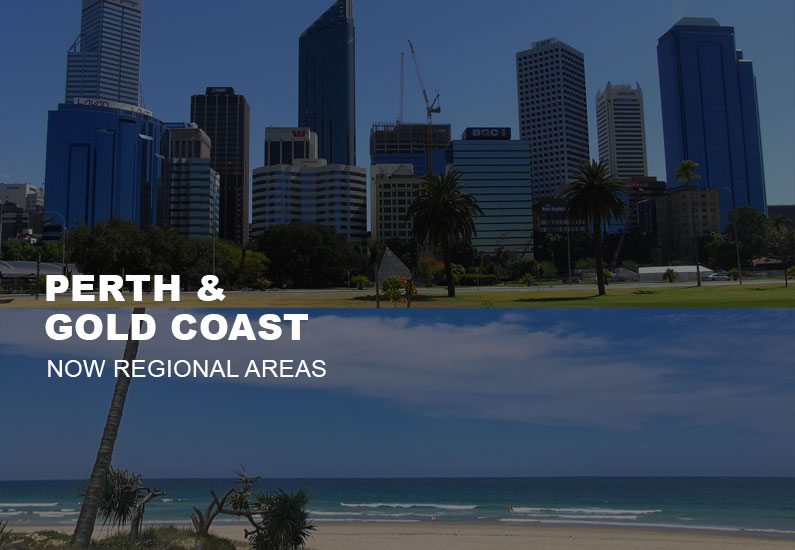When applying for the Temporary Graduate visa (subclass 485), Skilled Independent visa (subclass 189) Points-tested, the Skilled Nominated visa (subclass 190) or the Skilled Work Regional (Provisional) visa (subclass 491), to meet the Australian study requirement, you must have completed either:
- a single eligible qualification that requires at least 2 academic years study, or
- more than 1 qualification that results in a total of at least 2 academic years study resulting in an eligible qualification
You must have completed your study in Australia, in a total of no less than 16 calendar months, while you held a visa authorising you to study.
Your course, or courses, resulting in the award of an eligible degree, diploma or trade qualification, must be registered on the Commonwealth Register of Institutions and Courses for Overseas Students (CRICOS) and instruction must be completed in English.
Note: if applying for a Temporary Graduate visa (subclass 485), you must have completed your study in the 6 months immediately before making an application.
Course requirements
Each qualification you have completed and are relying on to meet this requirement must:
- be either a bachelors degree or higher, a diploma, an advanced diploma, or a trade qualification
- have been undertaken at an Australian educational institution in Australia
- have been taught in English
- be registered on CRICOS
- have been undertaken while you held a visa authorising you to study
Note: You cannot use English language proficiency courses or enabling programs to meet the Australian study requirement.
The 2 academic years study requirement
Two academic years of study equals 92 weeks that contribute towards 1 or more acceptable qualification.
What is meant by 2 academic years study?
Two academic years study, or 92 weeks of registered study, is based on the duration of the course as registered by CRICOS.
You can take longer to complete your course, but you will only be credited with the number of weeks that CRICOS determines as the standard duration. For example, if you take 92 weeks to successfully complete a course that CRICOS says should take 78 weeks, you will only receive credit for 78 weeks only.
Only study successfully completed count towards the 2 academic years. You cannot include failed subjects.
Credits and exemptions
Credit for prior learning may reduce the amount of study undertaken.
Minimum of 16 months study in Australia
The Australian study requirement cannot be met in less than 16 calendar months.
This period begins when the course commences (generally from the start of lectures and excluding orientation periods) to the date at when all academic requirements have been completed
Example: If your course is CRICOS registered for 92 weeks (2 years) and you received credit based on study in another course also registered with CRICOS, then you could use these credits towards meeting the Australian study requirement even if you did not receive a qualification for this other course. The actual period of study on which the credits were based may also be used to meet the 16 month requirement.
However, if your study credits shorten the amount of time you physically studied your course in Australia to less than 16 calendar months, then, you may not meet the Australian study requirement.
If this happens you have several options, including:
- have the university cancel the credits and complete these subjects for your qualification
- complete extra units, such as elective units, that the university accepts as award units for the qualification
You may wish to complete an extra eligible qualification that can be used together to meet the Australian study requirement. Your extra qualification must be of sufficient CRICOS-registered duration to make up for the credited units from your course (or courses), bringing the total to at least 92 weeks.
Overlap of qualifications
You can undertake overlapping qualifications. For example, students applying under the Graduate Work stream of the subclass 485 visa could complete a Diploma in Finance and then a Diploma in Accounting where 2 units in the last qualification were granted as credit from the earlier qualification.
Where qualifications overlap, you can’t count the period of study more than once.
If you complete more than one qualification but use only the most recent qualification to meet the Australian study requirement, any credit you receive in the most recent qualification from the previous qualification counts towards meeting the Australian study requirement.
The actual period of study within the previous qualification can also be used to meet the 16-month requirement.
Study outside Australia
You can still meet the Australian study requirement if your course included study overseas, provided you complete at least 2 academic years of study in no less than 16 months in Australia in a CRICOS registered course.
Example: You would have completed 2 academic years study in Australia if you undertook a 3-year, 6-semester bachelor degree as follows:
- semester 1 – outside Australia
- semester 2 – in Australia
- semester 3 – in Australia
- semester 4 – in Australia
- semester 5 – outside Australia
- semester 6 – in Australia
The pattern of study does not matter as long as the Australian study requirement is met.
You must complete at least 16 months of study while you are physically present in Australia.
You will not have met the Australian study requirements if you:
- have studied solely at an overseas campus of an Australian educational institution, or
- studied online or by correspondence with an Australian educational institution while outside Australia.
Evidence to attach to your application
Provide a certified copy of the completion letter from your education provider that shows:
- the date the course started and ended
- whether you did any distance learning
- certified copies of course transcripts
- the date of course completion
- the location of the campus where you studied
- whether you studied full-time or part-time
- the language in which you received instruction
If you received credit for a course that you intend to use, to show that you have met the conditions of the Australian study requirement, the completion letter must state as such.
Completion date
Applications for a subclass 485 visa must be made within six months of the date of course completion.
The date of course completion is the date you first met the academic requirement for the award or your degree, diploma or trade qualification and were advised in writing by:
- letter
- publication in a newspaper
- publication on the internet
- bulletin board at the tertiary institution.
This date should not be confused with the date of conferral of award. The date of conferral is the date that the student actually receives their qualification, for example, at a graduation ceremony.
Interested to know more?
Click here to book a FREE 15 minute phone call with one of our friendly consultants. You may also fill out the Online Assessment Form for a free assessment to know your eligibility for a visa to Australia.
My Migration has a team of experienced migration consultants with more than 20 years of combined experience and thousands of successful applications. Feel free to check our reviews on Facebook and Google.
Disclaimer
The above article constitutes only generic information on migration issues, and does not constitute specific migration advice to any entity or individual.



